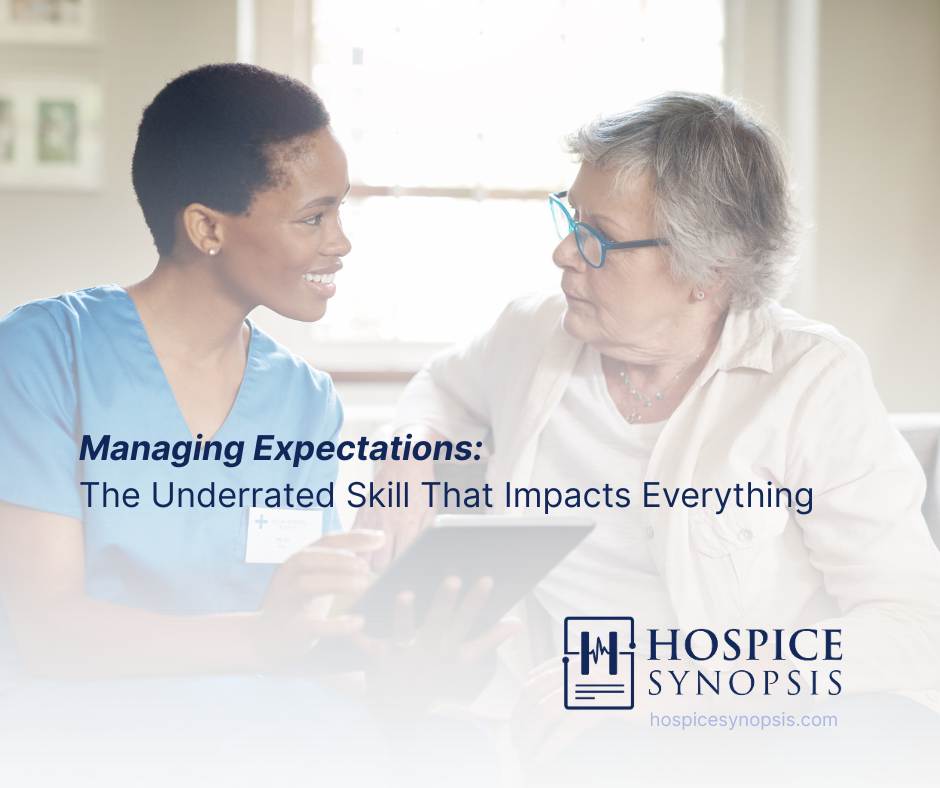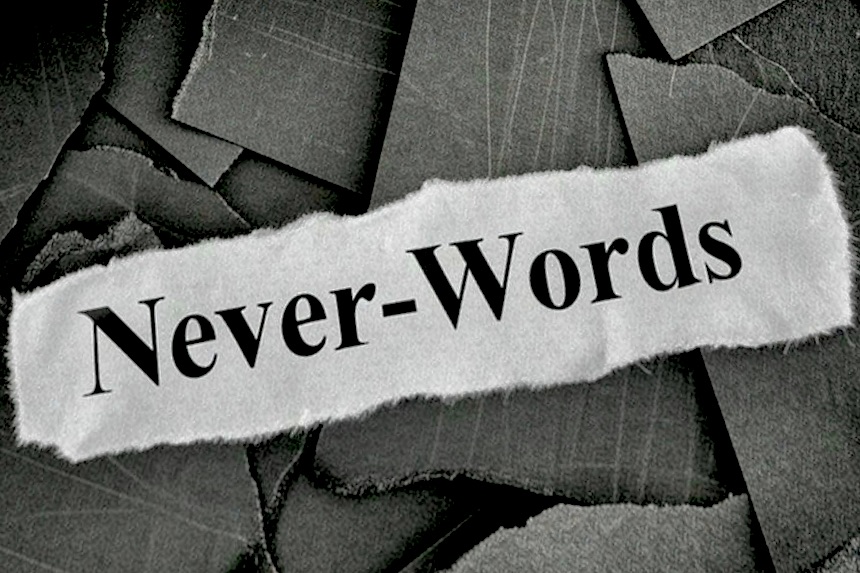The Underrated Skill That Impacts Everything

When It Doesn’t Seem Like Enough: A Story in Two Voices
“It was awful,” she said. “I had to give the meds. And no one was there. We were alone.”
In those final hours, Nicki wasn’t just grieving. She was the caregiver, the one holding the morphine. She felt guilty, afraid to do it wrong, and overwhelmed with her own swirling questions.
The triage team dispatched a nurse. But for Nicki, in that moment, it wasn’t enough. She had some information, but no clear forecast of what to do if the meds didn’t work. No one had explained that “on call” could mean support was an hour away.
She wasn’t clinically unsupported, but her grief was compounded by uncertainty.
On the other side of that same midnight story:
“I got the page and headed out immediately. Triage said the caregiver was worried, so they gave some tips on dosing existing meds. The GPS said 47 miles to go.”
Susan, the on-call nurse, dropped everything. She drove at the upper end of the speed limit and arrived promptly. She offered her full presence. But the patient had just died. She felt the brunt of arriving “too late.”
Sometimes, this is a staffing problem. But much more often, it’s a systems problem. Hospice was designed for intermittent presence—but the public expects immediate on-site availability.
Especially in rural areas, hospice teams cover wide territories with limited resources. One nurse may manage three counties. That’s the clinical reality. But the caregiver’s memory will often be based on one question: Was someone physically there when it mattered most?
This situation was a failure in expectation alignment. To avoid this, we need to establish and review clear plans much earlier in the course of care.
Expectations Unspoken
A 2021 study found nearly 50% of caregivers felt hospice didn’t meet their expectations. This is largely because they didn’t know what hospice actually included, how often support would arrive, or what their role was supposed to be. [1]
I asked in a recent informal LinkedIn poll, “What is the biggest knowledge gap in hospice?” One answer stood out at nearly 50%: managing expectations.
This insight came from seasoned clinicians, team leads, and front-line hospice staff. They tell me is this: trust doesn’t break from poor care. Trust frays when expectations remain unspoken.
Families can’t understand what we never clearly said.
The Gap Between Assumption and Reality
Every person walks into a hospice consult with different expectations for the journey ahead. Few actually know the terrain they’re about to face.
Families often think of hospice as a full service rescue mission. Instead, they often receive a simple well-meaning map and a comfort kit—just before a long, unfamiliar hike.
- Many patients quietly hope they’ll get better soon: “That’s why I have hospice experts.”
- Clinicians may assume families understand the limits of the benefit—a defined Medicare offering with clear regulatory edges.
- Families often expect a panacea: constant nursing, instant relief, and full-day presence from admission through aftercare.
- Referring providers or marketing teams may unintentionally set expectations we simply can’t meet.
Across the board, assumptions differ. Mismatched expectations can’t all be true. What begins as a misunderstanding often ends as mistrust, just when families are looking for someone to help carry the weight.
Forecasting Trust: Conversations That Prepare
Managing expectations isn’t a script. But it should be!
We call them Two-Minute Forecast Scripts—brief, teachable conversations that help families understand what hospice care truly includes and what to expect next. Delivered near the end of a visit, these Two-Minute Forecast Scripts clarify symptoms to watch for, explain roles, and build trust by previewing expectations until the next visit.
These clinical tools are vital. When IDG teams train, model, and consistently use these scripts, they see success in real time. These scripts do more than inform. They turn communication into confidence and prepare families for what’s next.
This is how we deliver clarity as care.
Research emphasizes that “Proactive communication that clarifies the scope and limitations of hospice services is critical to mitigating caregiver distress and fostering trust in the care process.” [2]
“We’ll be here for you” sounds comforting. But families need specific orientation over vague reassurance. Imagine instead:
“We’ll always be here for you—by phone, with guidance, and for urgent visits when needed. Call us early if the shortness of breath starts again anytime. Here’s how that works with your family regarding the meds for this weekend…”
This isn’t about simply under-promising or over-delivering. Preparation itself is a form of presence. And the clarity that follows stays long after the visit.
From Words to Practice
Here are a few simple ways IDG teams can start today:
- Reframe vague language (“We’ll be here” → “Here’s how we respond…”). That’s care planning in action, clear guidance with a timeline that families can trust.
- Include expectation alignment at every admission—and during any change in condition.
- Share a simplified written care plan that outlines visit frequency, symptom response, and who does what and when. Review it with the family to ensure understanding.
When we lead with clarity as care, we equip patients, families, and facilities with the expectations and tools they need – before a mismatch becomes a crisis.
“Clarity is care. Simple, clear, honest communication is one of the most eloquent forms of clinical intervention.” Brian H. Black D.O.
3 Key Insights
Mismatched expectations are one of the leading causes of distress in hospice care.
- Families don’t need perfection but they need clarity of expectations. It’s how we give care.
- Managing expectations is a clinical skill. It is one we can teach, support, and systematize.
Two Actionable Ideas
- Use forecast scripts and simplified care plans to create clear, shared expectations.
- Train IDG teams to revisit expectation alignment regularly—not just at admission.
One Compassionate Call to Action
Let’s stop assuming families know what hospice means. Try a forecast script of your own. Walk them toward what comes next with compassionate clarity.
Bibliography
[1] Kehl, K. A., Kirchhoff, K. T., Kramer, B. J., & Hovland-Scafe, C. (2021). Caregiver perceptions of the quality of hospice care: A prospective cohort study. American Journal of Hospice and Palliative Medicine, 38(3), 258–266. https://doi.org/10.1177/1049909120963600
[2] Head, B. A., & Faul, A. C. (2013). Development and Validation of a Scale to Measure Satisfaction with End-of-Life Care. Journal of Palliative Medicine, 16(9), 1093–1100. https://www.liebertpub.com/doi/10.1089/jpm.2013.0062






